
There’s a vast cauldron where mud as caustic as sulphuric acid boils continuously. A superhot waterfall bubbles with steam and you can instantly cook food by dangling it into a stream. And we’re here to deliberately cake ourselves in thick grey mud with the aroma of rotten eggs.
A journey to Hell’s Gate may not sound like a quintessential mind and body soothing experience. But we’re in New Zealand where a lot of assumptions get turned on their head. And this shore excursion experience at Hell’s Gate turns out to be so heavenly, it leaves us tingling for days.
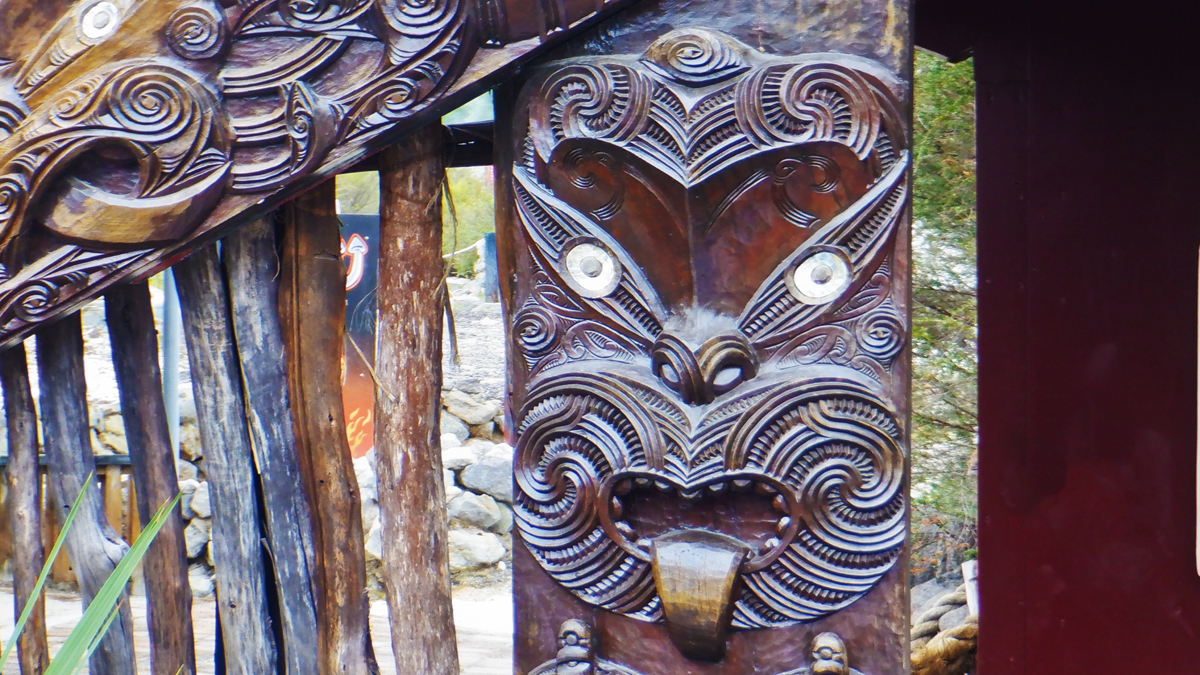
Where the Hell are we?
This is an exclusive small-group experience from Seabourn Cruises’ intimate Seabourn Encore on a two-week cruise from Auckland to Sydney. As part of a wellness theme, some of the best experts in the fields of mind and body healing, nutrition and longevity are on the cruise to coach and advise in daily discussions and experiences. They’re all affiliated with Seabourn’s exclusive Spa and Wellness program, designed by integrative medicine pioneer Dr. Andrew Weil.
We’ve driven an hour from the port of Tauranga on New Zealand’s lush north island to the Maori-owned center of Tikitere Ora, where the Earth’s crust is thinner than almost anywhere else in the world. Just a little over a mile beneath us is a lake of molten lava, so we are really standing on an ancient volcano.
The valley is considered sacred by the Maori and an elaborate wooden gate called the Waharoa carved with scenes from legendary stories is said to provide visitors protection from the volcano god Ruamoko. Crossing through the portal you can see why visitors thought they needed all the help they could get.
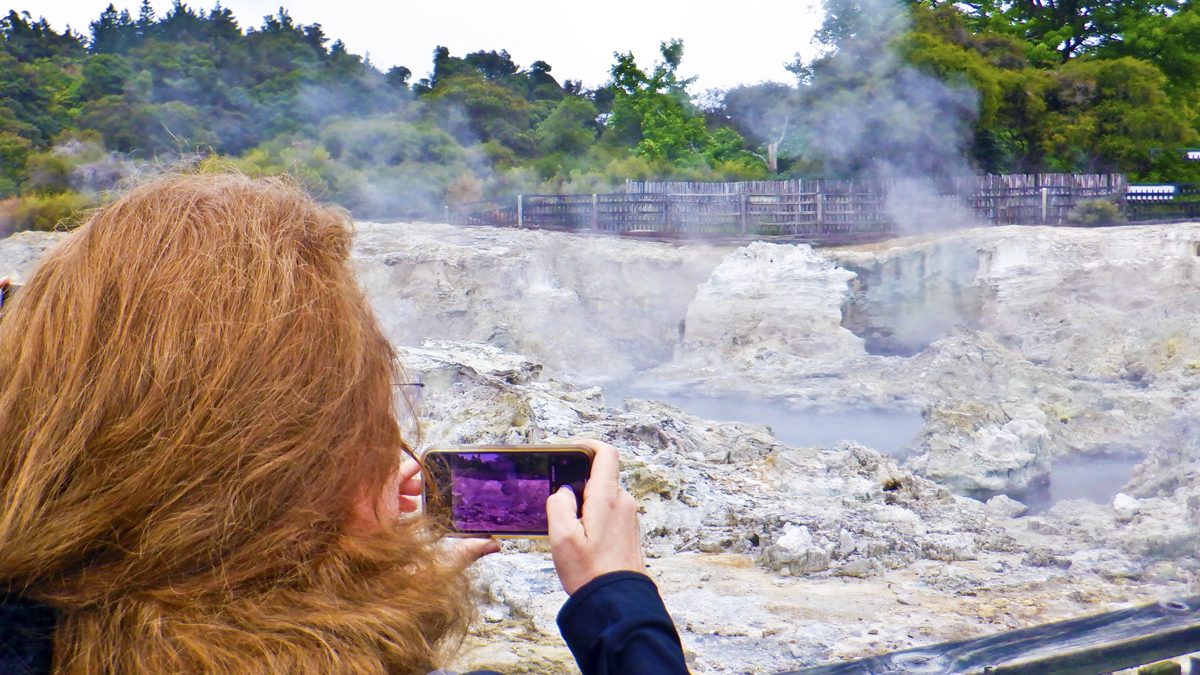
What’s it all about?
Think of the valley as like a giant coffee percolator. Water seeping through cracks in the earth is superheated and turns to steam that condenses closer to the surface, taking sulphur and mineral-rich clay with it. As it emerges at the surface it forms fantastic bubbling ponds and smoking mounds. For over 700 years, the Maori have found soaking in its hot pools can be instantly restorative, reducing inflammation, joint pain and arthritis.
A path is carved through the eerie maze and you’re well advised to walk the straight and narrow. Black holes gurgle, fountains of grey goo shoot skyward, while signs register temperatures that can go higher than the boiling point.
Many of the features were named by George Bernard Shaw during a visit here. One formation he called The Infants because the twin geysers were so lively. Another pool whose level is constantly changing Shaw named Baby Adam, after his nephew who loved to bounce up and down. Another set of boiling black pools are nicknamed the Ink Pots.
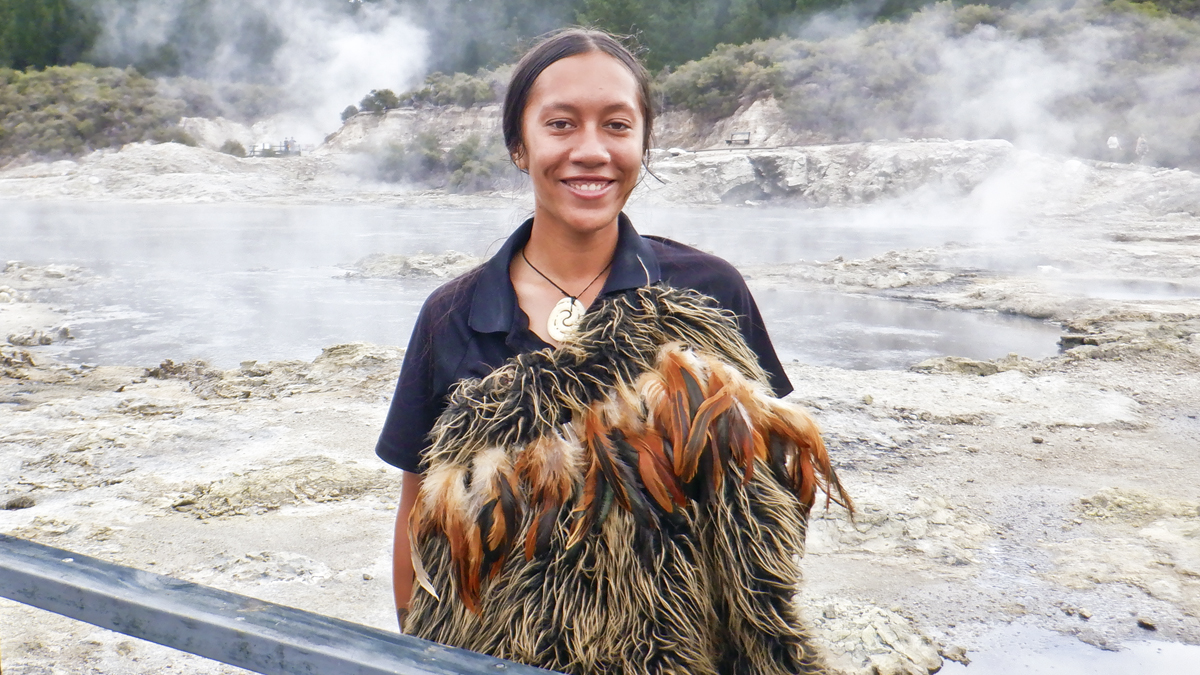
Life abounds in seeming desolation
Some of the Maori guides are dressed in traditional cloaks made of flax and studded with brown kiwi feathers. They’ve learned to live around the otherworldly terrain and hunt for the wild game and birds who call the area home.
A particular delicacy is a Tui, or parson bird, which the Maori learned to snare while the birds were feeding on berries in the orange-barked trees that grow around the sulphur pools. They’d fill a woven basket with water and its edge would be lined with tiny nooses that would tighten when a bird put its head through to take a drink.
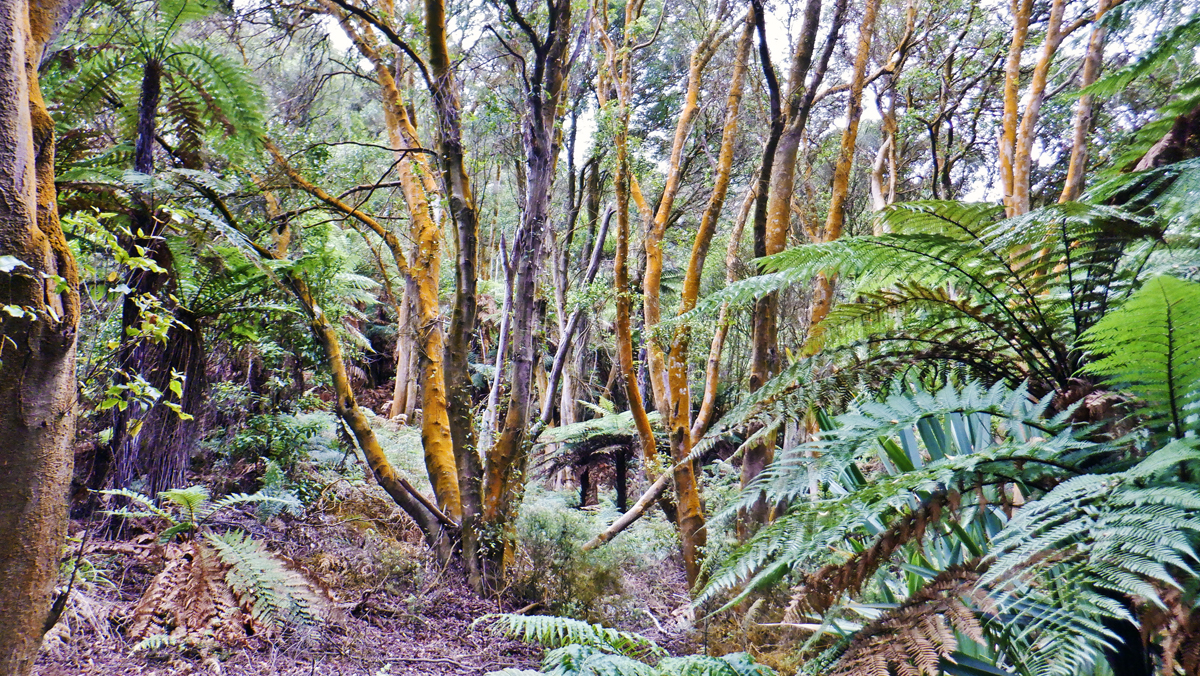
And there are thick stands of trees and green seaweeds lining the pools even though water temperatures are near the boiling point all year long
A dramatic example is the natural cooking pool, where the water is a constant 98 degrees Celsius and a full-sized pig dangled into it can be roasted completely in two hours. Although the water smells vaguely of sulphur, cooking in it does not add a taint to food.
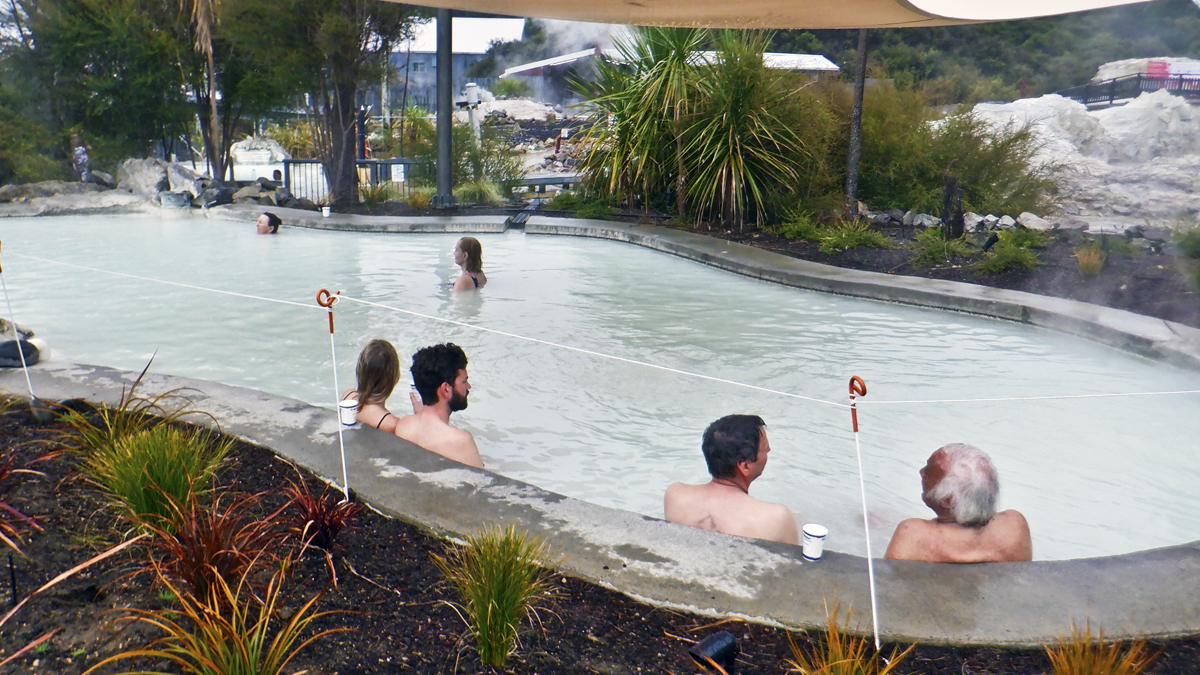
Taking a muddy plunge
After our walking tour, the fun really starts. The Tikitere complex features pools for soaking in mud and water from sulphur springs.
We’d been cautioned in advance to bring swimsuits that were expendable because the pungent fragrance of sulphur can linger even after washing. Fortunately, the Tikitere Ora center provides towels and loaner bathing attire. It’s not necessarily the most flattering, but the temporary swimwear is certainly a lot more convenient than trying to clean up muddy clothes back on the ship.
Bathing in the mud is one of the most primitive experiences you can imagine: getting into the warm ooze and slathering it all over your body and siting for the recommended 20 minutes is immediately soothing. The mineral rich goop is said to pull toxins out of cells and the warm mud relaxes any muscle or joint fatigue. It certainly makes skin feel super smooth and tingling. Just keep it away from your eyes because the sulphur rich mix can really sting.
After a shower to get the caked-on mud off, it’s time to relax in the warm sulphur spring for another 20 minutes or so. It leaves us all floating in a seemingly timeless ecstasy. Drinking lots of water is important as the heat and the detoxification can be dehydrating.
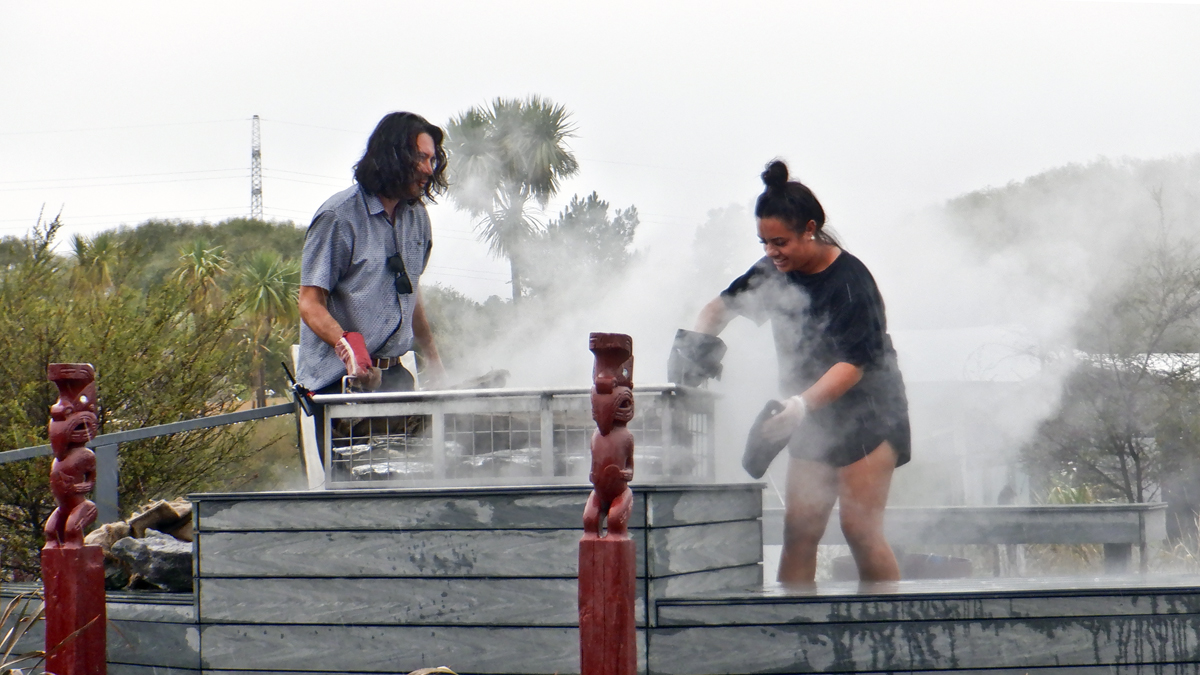
Cooking the natural way
Afterwards, it’s time for lunch and another surprise. Our guides have been roasting New Zealand lamb and chicken along with a selection of fresh picked vegetables in a cage directly over a hot spring pool. Earlier we’d seen a Maori guide cooking root vegetables and shellfish in a traditional canvas pouch dipped on a long pole directly into a boiling geyser. Don’t try this without practice: they know where to step because one false move could prove costly.
It’s time to head back for dinner on Seabourn Encore. While the drive is long, it’s through gorgeous terrain and everyone is feeling mellow. This coastal region is also ideal for growing kiwi fruit, and we’re told 80 per cent of New Zealand’s kiwi crop is harvested on farms in this region. I always thought they grew on trees, but instead they grow on long vines in remarkable profusion.
It’s been an amazing day going to Hell and back and I wish I could do it more often.
Seabourn Encore offers a series of New Zealand cruises that visit Tauranga (Rotorua) in January and February of 2021. Seabourn’s Mindful Living Tour Hell’s Gate Tikitere Ora Experience is priced at $299 a person





